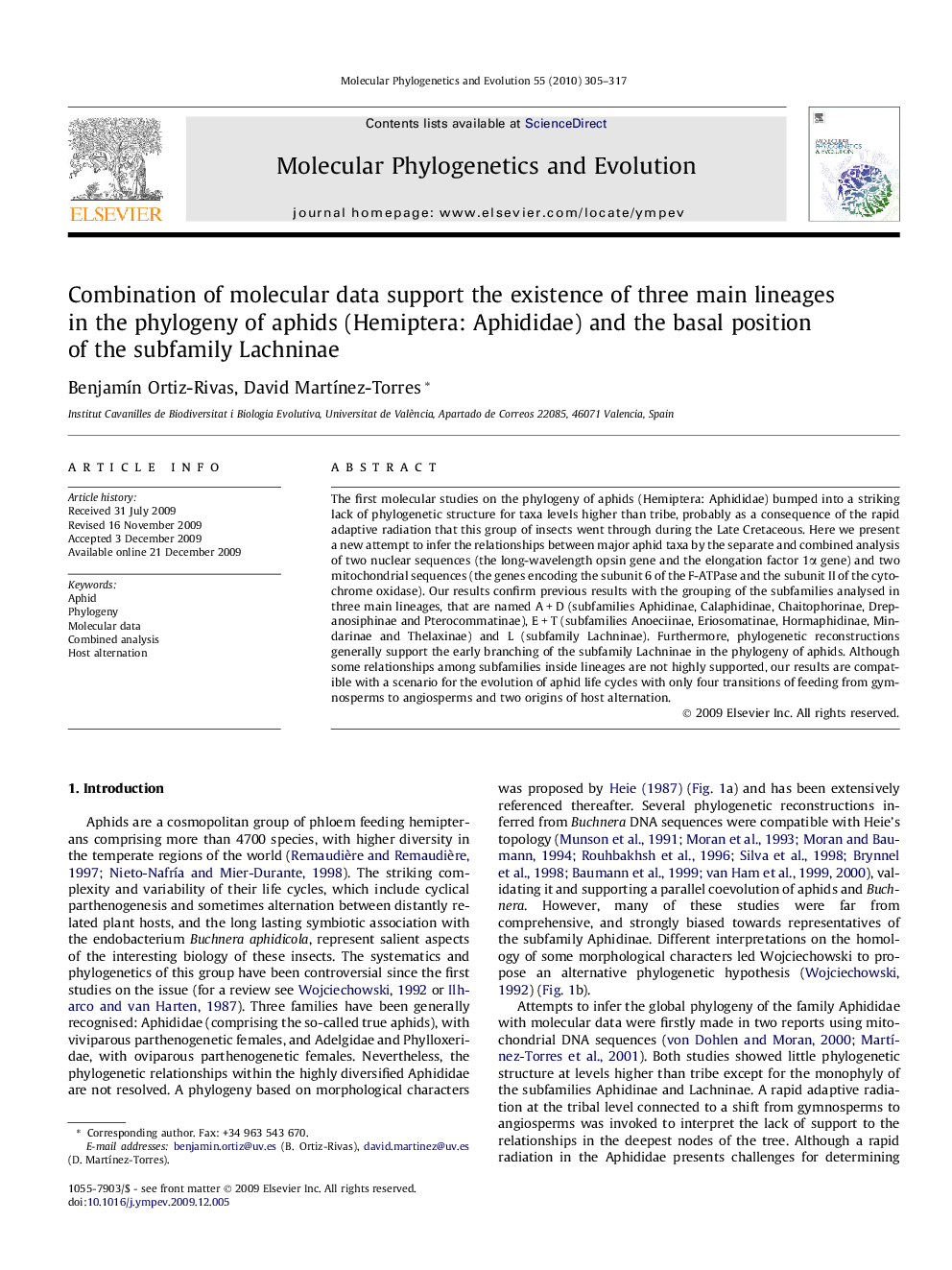| Article ID | Journal | Published Year | Pages | File Type |
|---|---|---|---|---|
| 2834851 | Molecular Phylogenetics and Evolution | 2010 | 13 Pages |
The first molecular studies on the phylogeny of aphids (Hemiptera: Aphididae) bumped into a striking lack of phylogenetic structure for taxa levels higher than tribe, probably as a consequence of the rapid adaptive radiation that this group of insects went through during the Late Cretaceous. Here we present a new attempt to infer the relationships between major aphid taxa by the separate and combined analysis of two nuclear sequences (the long-wavelength opsin gene and the elongation factor 1α gene) and two mitochondrial sequences (the genes encoding the subunit 6 of the F-ATPase and the subunit II of the cytochrome oxidase). Our results confirm previous results with the grouping of the subfamilies analysed in three main lineages, that are named A + D (subfamilies Aphidinae, Calaphidinae, Chaitophorinae, Drepanosiphinae and Pterocommatinae), E + T (subfamilies Anoeciinae, Eriosomatinae, Hormaphidinae, Mindarinae and Thelaxinae) and L (subfamily Lachninae). Furthermore, phylogenetic reconstructions generally support the early branching of the subfamily Lachninae in the phylogeny of aphids. Although some relationships among subfamilies inside lineages are not highly supported, our results are compatible with a scenario for the evolution of aphid life cycles with only four transitions of feeding from gymnosperms to angiosperms and two origins of host alternation.
